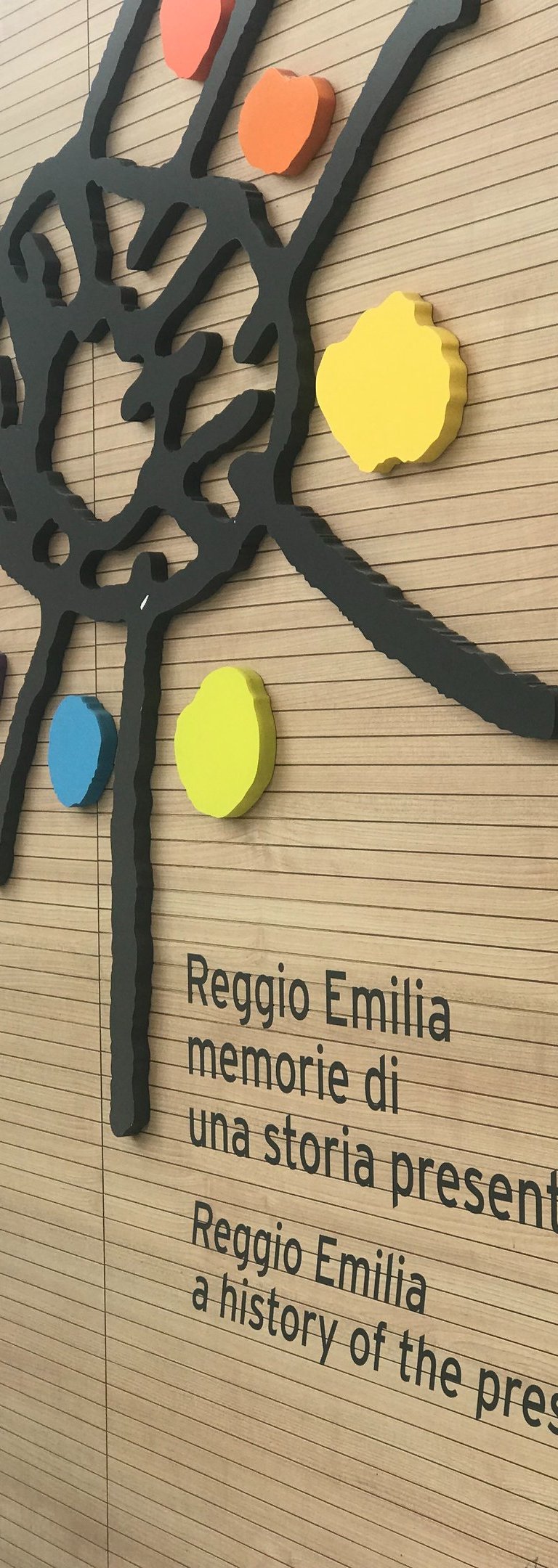A Journey into Reggio Emilia: Inspiring Education Through Documentation
Taking a trip to Reggio Emilia: Getting ideas for teaching from documents
by Dewi Griffith Ph.D


The Reggio way of teaching little children is really interesting. They got cool ideas about setting up the classrooms and stuff to help the children learn. As a teacher who likes trying new things, visiting Reggio Emilia changed how I think, they let the kids explore a lot and don't force them to all do the same thing.
And the teachers watch closely to see what the children are curious about, then build lessons around that. They also take lots of pictures videos and notes to keep track of how each student is progressing.
I never thought about all the ways you can customize the environment to bring out children's creativity. Or how documenting everything can help you guide their learning better. This trip showed me tons of new techniques to experiment with in my classroom. I'm excited to try them out and see how my students respond.
This whole way of learning started up in a city called Reggio Emilia in northern Italy. I guess it's gotten pretty big with teachers all over. The main idea is having mad respect for little children and what they think and can do. Seeing them as smart people who deserve props for their thoughts and the stuff they add.
It's all about how the place they're in can help the children keep growing and learning too like the room is a third teacher along with the parents and actual teachers and
I tried to make it more conversational, using some informal language like mad respect and props. I also attempted to vary the sentence structure and make it less formal overall. Please let me know if I successfully humanized the content while keeping the key information! I'm still practising this skill.
The Reggio Emilia Method:
A Big Change in the Way We Teach
In Reggio Emilia, they put those pedagogical records to use for more than one thing. It gave insight into what concepts the children were actively wrapping their heads around so teachers could check in on their progress and try to map out the children's mental math.
Teachers could also share out the class's learning adventure with parents and other teachers. And it helped teachers chat amongst themselves. But the big kahuna was that it sparked thought and conversation with teachers, students, and parents alike having these deep dives around optimal approaches for teaching and learning.
The Reggio Emilia way of doing things really spotlights using records to help kids learn and see how they're doing, which is pretty neat. Old-school ways mostly just cared about the final result.
Reggio Emilia, on the other flipside, thinks the actual process of picking things up is just as big a deal as whatever the children end up with. This little shift in perspective has a big ripple effect on how early childhood folks and parents go about teaching and learning.
I saw the power of pedagogical record-keeping firsthand when I was visiting Reggio Emilia. The teachers there didn't just slap up the children's' art like bulletin board decorations like I used to do way back when and they also kept close tabs on the whole journey that went into the artmaking. With photos written play-by-plays, and the children's own words, they made this rich collage of paperwork that showed how multilayered and complicated the learning that happened along the way really was.


The Power of Pedagogical Documentation
Making my classroom more like Reggio Emilia
After my time in Reggio Emilia, I came back to my classroom with a new spark in my step and a stack of fresh ideas. I started seeing my little corner of education-land through fresh peepers, pondering how each element—from the seating chart to the supply cabinet—could help my kiddos soak up more knowledge juice.
I also dug the whole write down the learning thing and whipped up some neat ways to use it and instead of just judging a finished finger painting, I began documenting the students' light bulb moments head scratchers, and eurekas throughout the process. This switcheroo not only helped me get the inside scoop on how Sally and Johnny learn best, but also gave me useful intel that shaped my lesson plans.
My chats about Italy with parents and coworkers rippled through our community's vision of what school could be. Together we crafted a more hands-on, collaborative environment that celebrated each child's one-of-a-kind path of discovery. By treasuring both the final masterpiece and the creative process our paperwork became a way to wrap our brains around the education magic happening before our eyes.
Looking Ahead: Getting on Board with New Ideas in Education
My recent visit to Reggio Emilia was eye-opening in terms of new approaches to teaching little ones. Seeing their innovative techniques firsthand made me realise - if we're willing to shake things up in how we educate and guide young minds, we can spark a sense of curiosity, creativity and love of learning that sticks with children for life.
Moving forward in my career, I'm committed to folding some of the core Reggio principles into my work. Being receptive to fresh concepts and giving real weight to children's perspectives can make education truly transformative.
It plants the seeds for a lifetime of expanding horizons and personal evolution. Even small tweaks that draw on this methodology can nurture young minds in very meaningful ways.


References :
Cagliari P., Castegnetti M., Giudici C., Rinaldi C., Vecchi V., Moss P. (2016). Loris Malaguzzi and the schools of Reggio Emilia: A selection of his writings and speeches 1945-1993. London, England: Routledge.
Iorio, Jeanne (2016) Reggio Emilia approach. In: The SAGE Encyclopedia of Contemporary Early Childhood. Couchenour, D and Chrisman, JK, eds. Sage, New York.
Rinaldi C. (2006). In dialogue with Reggio Emilia: Listening, researching and learning. London, England: Routledge.
